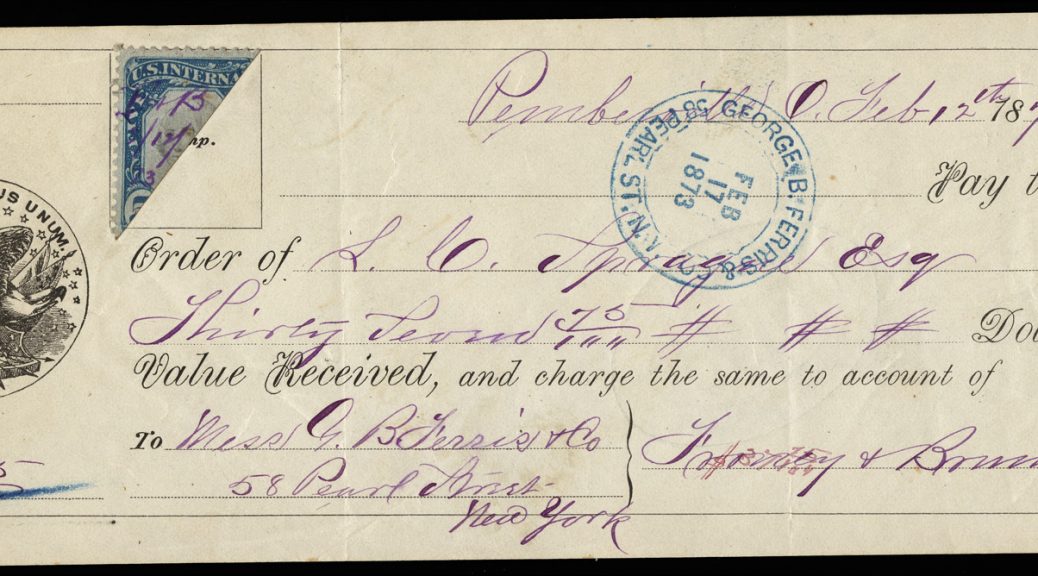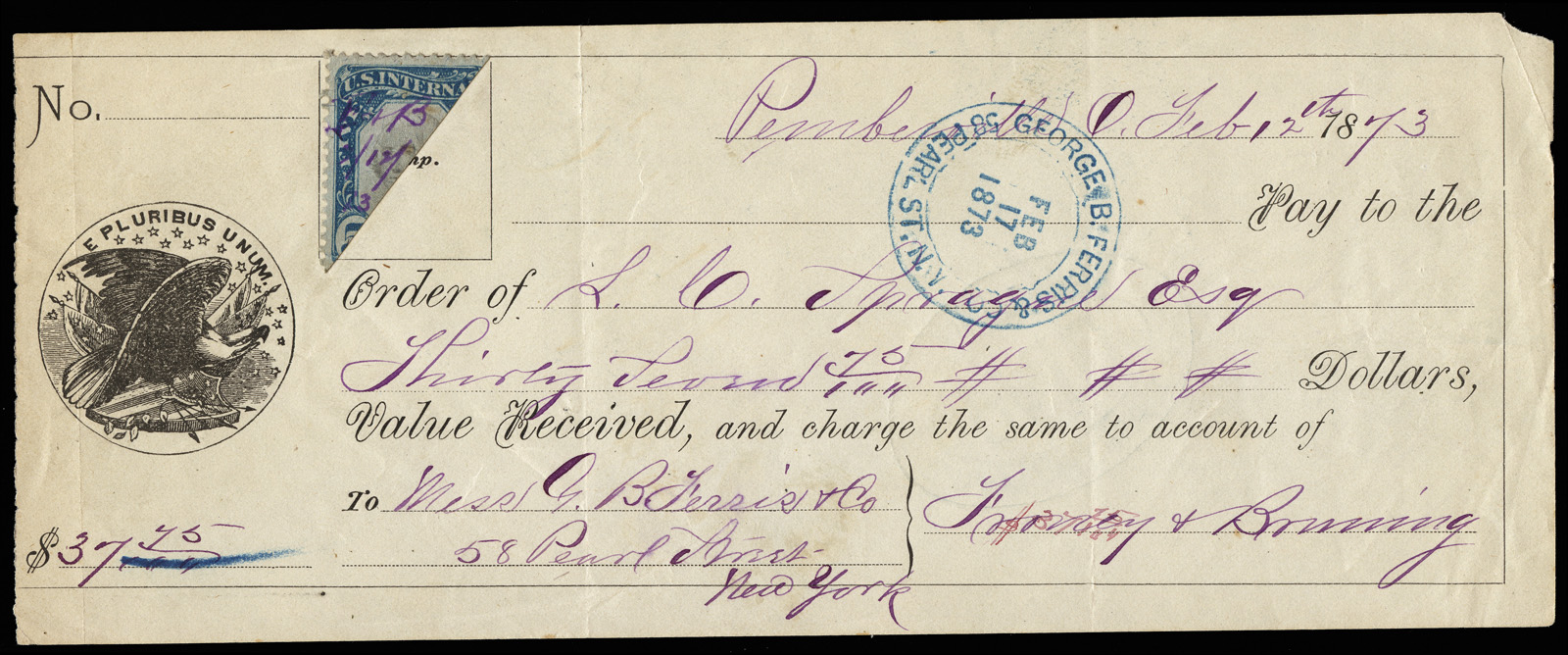
It’s a small world after all. It’s a small world after all…
… It’s a small world after all. It’s a small, small world!
Philatelically speaking, that is…
(And for those of you who now have that annoying Disney song running through your head: you’re welcome! 🙂
This is a bit long-winded, so please bear with the background information.
One of the areas of U.S. revenues I specialize in is bisects on document. I maintain a census page on my website.
Companies would bisect stamps if they ran out of the required denominations to pay the appropriate rate. Bisects, while technically illegal, were tolerated (as long as the tax was paid, the powers that be didn’t complain).
No 1st-3rd issue bisects are exactly common, with all having reported populations of 10 examples or fewer. The most frequently found are R6, R15, R32, R81, and R82. The 2nd- and especially 3rd-issue bisects are less common and tend to be of higher catalog value. The most frequently found 2nd-issue bisect is R106b, the 4-cent denomination, with 5 reported examples.
In October of 2015, Siegel Auctions held the second sale from the collection of the late Daniel Curtis, a specialist in U.S. revenue multiples (he also maintained “The Curtis Census” of revenue multiples, now maintained on the Siegel web site). In my opinion, Siegel did the estate no favors with respect to the balance lots, as they were oversized and haphazardly configured, seemingly random at time with respect to their contents. There was sprited bidding on those lots, with many dealers and specialist collectors competing for them.
Those lots were far above my abilities to participate, but I was able to track down buyers of certain lots and over the course of time trade for or purchase a few items.
One of the items I traded for was the only reported example of R107b, a diagonal bisect of the 5-cent second issue documentary, Philatelic Foundation cert # 243275.
Fast forward to last month. I was corresponding with Eric Jackson about another issue and I happened to ask if had any new bisects. He said he had a new 2nd issue bisect in some material he recently purchased, but he was about to leave for several shows and wouldn’t be able to locate it until he got back.
I called him several weeks later to ask about the bisect. I assumed it would be another 4-cent bisect, and even though I already had an example, I wanted to get an image for my census.
As it turns out though, it was a 5-cent bisect. I told Eric that I already had one, but would like to see it anyway, as it’s scarce enough that I wouldn’t mind having a second example.
He sent me an image of the document and that he thought it might be the mate to my example, and that he had no record of any others.
I did some Photoshop manipulation of the 2 images, and sure enough, the bisected stamp on this new document is the other half of the stamp on my example!
From Eric:
The item is ex-Hiram Deats. The lady I purchased it and other items from grew up in Flemington, NJ. Her father was a friend of Deats and was given this material by him prior to his death in the early sixties. It is possible this item has been off the market for easily more than 100 years.
Eric quoted a fair price (knowing that the stamp was the matching half to my example, he could have taken advantage of the situation, and I appreciate the accommodation), and it was on its way to me.
“Matched sets” (1 or more documents containing both bisected halves of the same stamp) are quite scarce. I am aware of a grand total of 13 sets across all 1st-3rd issue stamp types:
R6f
R36e
R56f
R69f
R70e
R81e (2)
R82e (2)
R83e (2)
R107b (this set)
R118
There are likely more sets out there (or at the very least, mates to examples already in the census), especially for bisect types where the companies in question are known to have used bisects on more than an isolated occasion:
- 1st issue 10-cent diagonal bisects on certificates of deposit from the Southern Pacific Railroad Co.
- 1st-issue $2 on Clay County, Illinois guardian’s bonds and other large-size legal documents
- 2nd issue 4-cent on checks from the First National Bank of Champlain, New York.
So, now 145 years after the halves were separated, they are now back together… what are the odds?
First document:
New document:
Here is a manipulated superimposed image of the two halves. The color is a bit off as I had to play with the opacity to align the halves.


